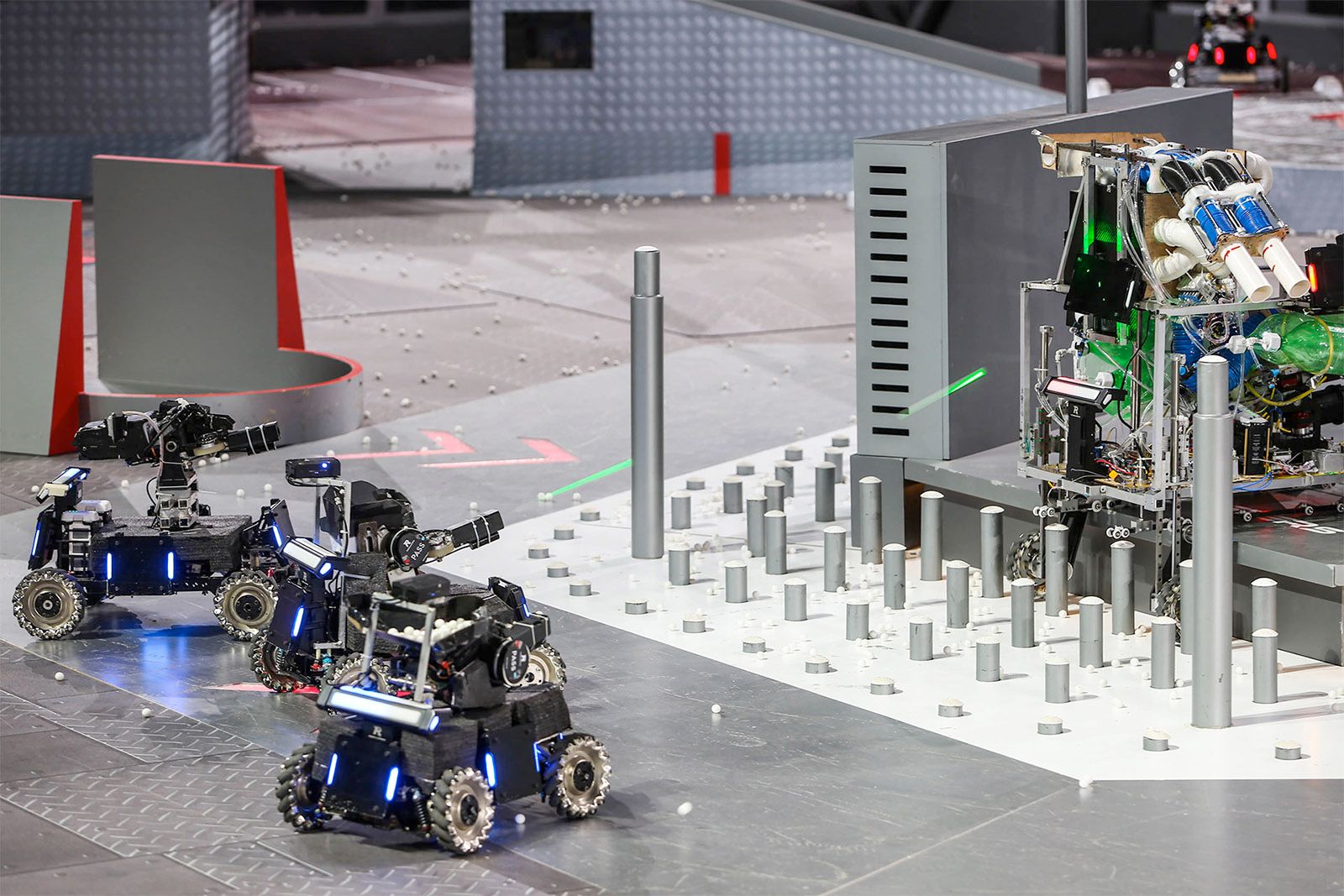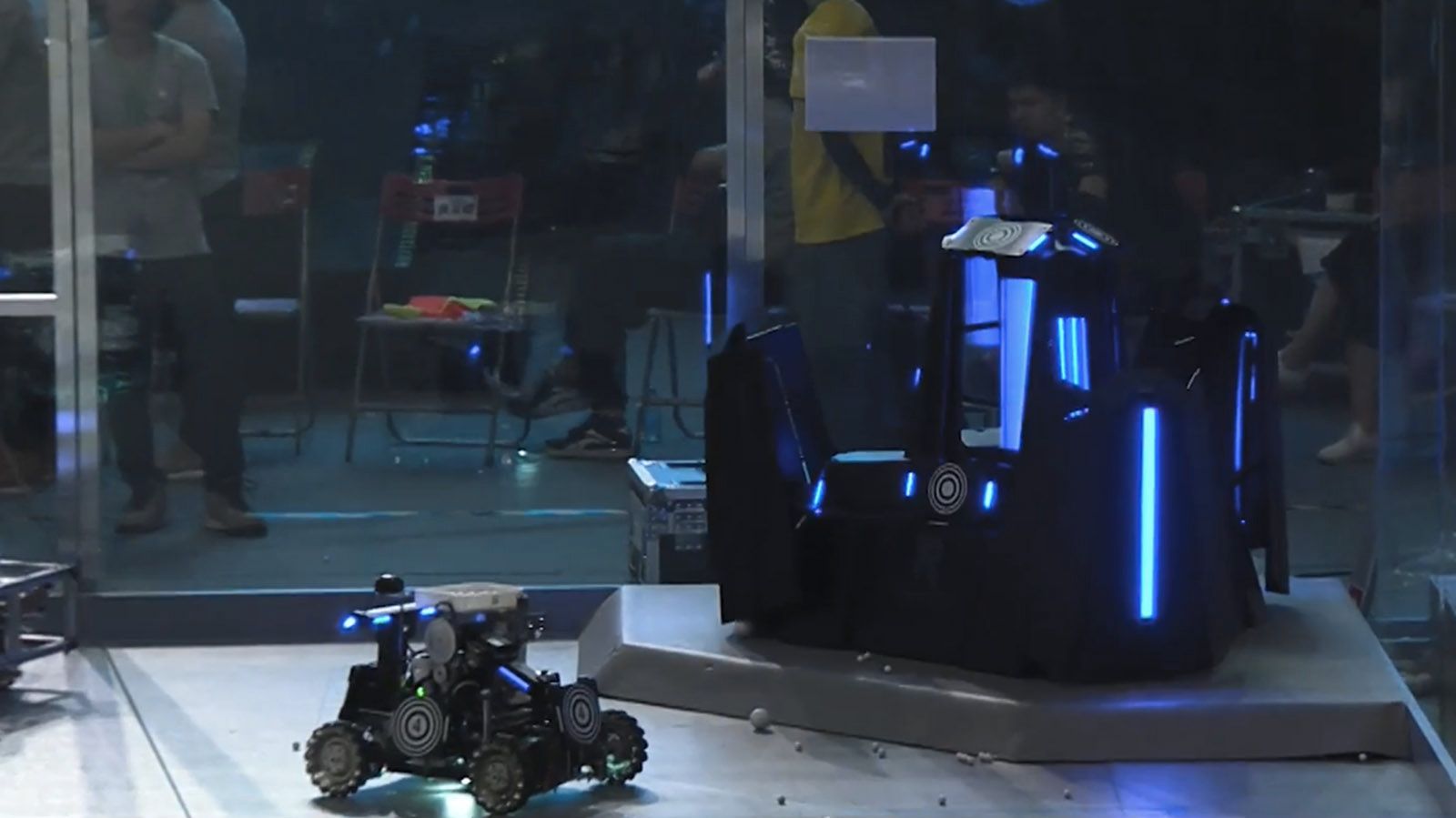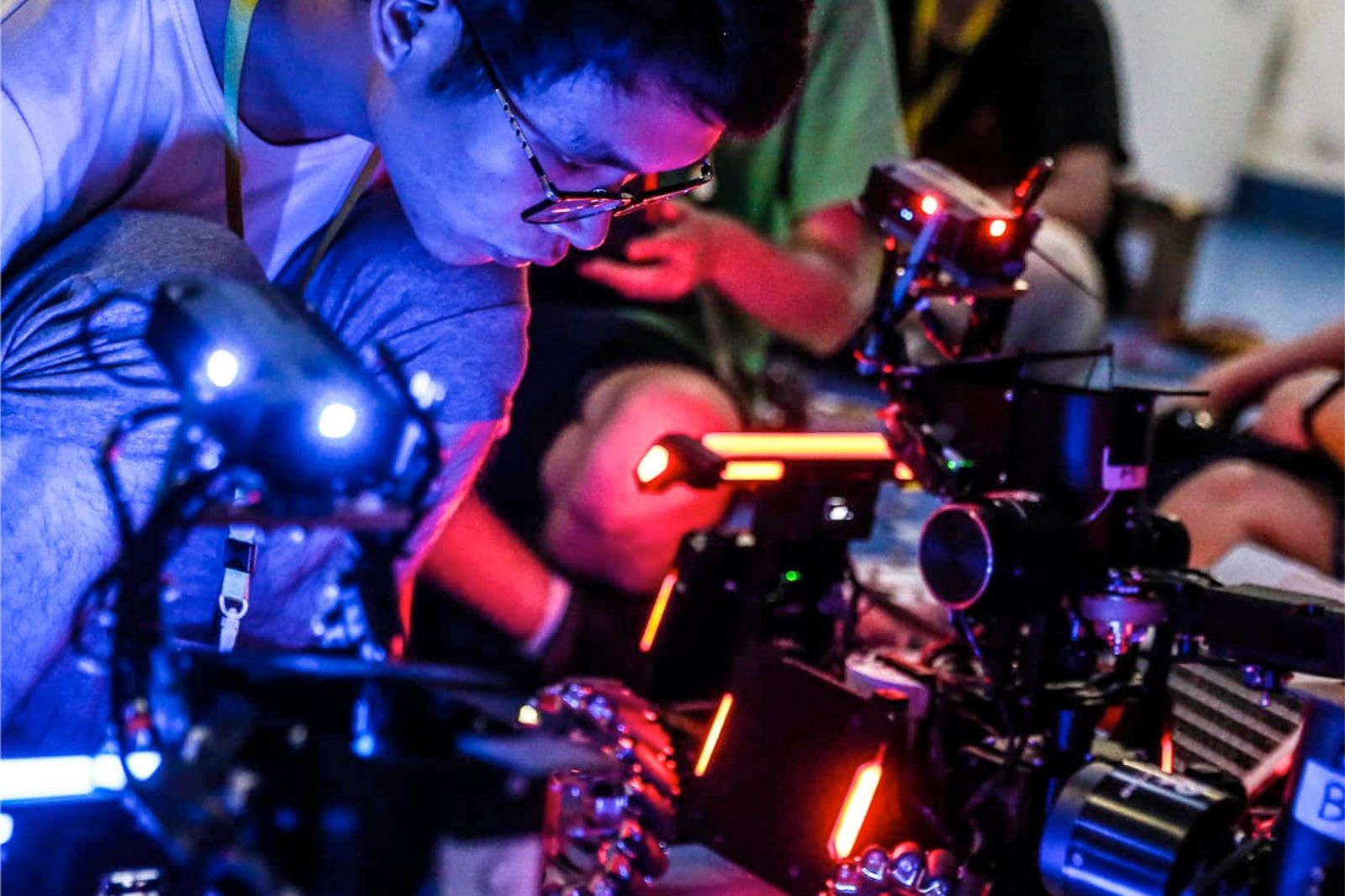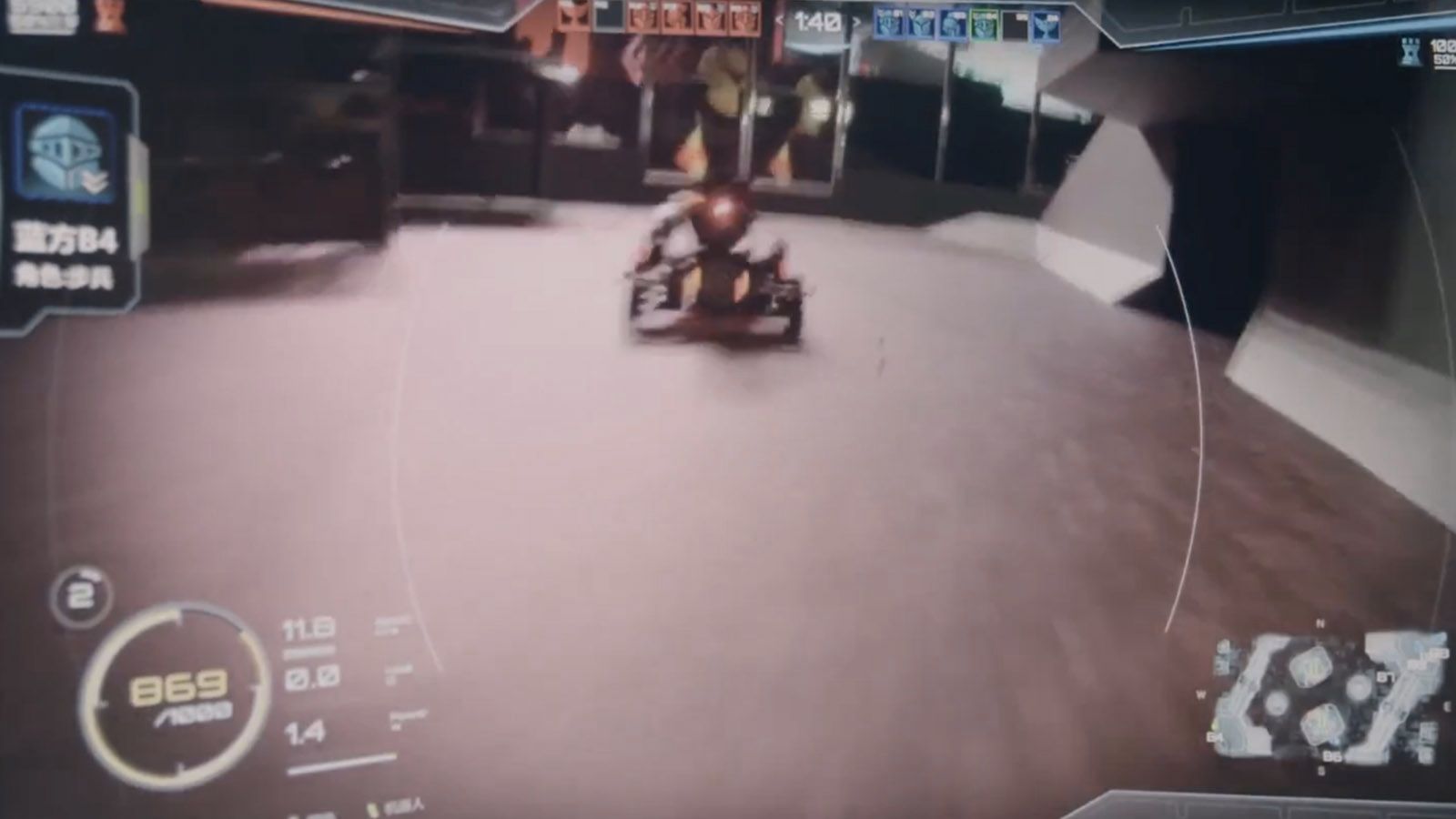There's an unwritten rule that everything comes full circle. It's cool to like 70s vinyl again. Luminescent 80s clothing is back in a big way. Remember Robot Wars on the BBC in the 90s* (where people built robots to battle to the death)? Well, take that, marry it with eSports (think League of Legends), plonk it in a giant Chinese stadium, and you've got Robomaster: the world's first first-person shooter robot battle arena competition.
So how did we arrive here? Well, DJI - the Chinese company better known for its drone products, such as the Phantom - had the brainchild to get students invested in engineering, so provided the tools to make it feasible. The competition is designed as a seven-vs-seven robo-battle to take out the opposing team's base. But it happens for real, as if eSports escaped the computer and came to life.
It's popular too. In 2018 the finals had almost one million viewers on Twitch. So to see what all the fuss is about, we popped over to Shenzhen, China, to catch the 2019 finals weekend and get a background education in all things Robomaster. Here's what it's all about.
Where can I watch Robomaster?
First thing's first, you might want to watch for yourself. In 2019 the finals weekend will stream on Twitch - with American, English language hosts - on Sunday 11 August.
https://player.twitch.tv/?channel=robomaster
All bots, bar the Engineer, can shoot projectiles - the Hero can shoot more damaging ones, which the Engineer can collect - and it's a case of the team's pilots targeting the pressure-sensitive pads on each bot's armour which, when struck, depletes said bot's health points (HP). Each bot starts with 200HP, but successful attacks can see a level up (lv2 is 400HP, lv3 is 600HP). Sustain too much damage and it's bot down.
What are the rules?
A match lasts for up to seven minutes. Three minutes prior to which there's time for teams to prepare the arena, clearing any debris or stray projectiles, ensuring bots are reset, charged, reloaded and ready to go. Then the mayhem ensues with battle commenced. It's a best-of-three to win overall (best-of-five for the finals; i.e. first to fourth place).
It's not as simple as it sounds though. Standard bots have 200 projectiles pre-loaded (which remove 10HP per hit), which can be restocked at assigned intervals from within a designated arena area. The Hero doesn't have any heavyweight projectiles (worth 100HP per hit) unless the Engineer goes to collect them from the central island. This is complicated, however, as the island is raised and different teams will need to develop their own methods to 'climb' this structure - or remove containers from the higher levels from the ground.
Each base has 2000HP before it's drained to nil - which is how a team wins before the time runs out. If the clock does reach zero then it's the team with the most HP remaining that takes the win. If neither base has any damage then it comes down to damage points, which are accrued throughout the match.
However, a base is shielded from side-on attacks unless that team's Sentry bot is killed, which sees the shield fall. Aerial attacks are possible, but it takes 100 seconds for the Aerial bot to charge for one minute's flight time, where it can then go and shoot up to 500 projectiles (also 10HP per hit).
Tactically planning is therefore important. That will change year on year, too, as DJI adapts the arena and changes the goals to create a level playing field for new teams entering the competition - preventing successful previous entrants from repeating their tactics, thus forcing them to rethink their approach.
What's the 'flower/petal' buff system about?
For 2019 the major change over the previous competitions is the introduction of a pentagonal flower-like structure to the centre, one to each side. At a set time in the match it's possible to shoot, in sequence, the five petals to activate a buff of 1.5x (which prevents the other side from being able to do the same).
This buff depletes over time, but buffs can be doubled up, with successful teams able to activate the buff twice to achieve multipliers. That makes those hits all the more critical, as 10HP becomes 15 or 20HP, while 100HP becomes 150 or 200HP - which can be crippling when used correctly.
Where does the engineering come into it?
DJI only provides the base Robomaster bots, which teams then develop upon. This can happen in a multitude of ways.
There's programming, where specific bot movements - say to avoid incoming fire - can be developed, such as spinning to make energy depletion less likely as a result of successful projectile hits. The more advanced the team's skills and the more inventive their ideas, the better chance they'll create of having the bots to beat.
The Sentry is a prime example: it runs along a rail and is pre-programmed using similar technology to what a self-driving cars use, automatically identifying opponents. If it's well programmed it can be more adept of aiming, predicting movements, tracking, and defending itself too. Given that the base's shield defence depends upon the Sentry being operational, it's a key player in the game.
The other aspect is modifying. Students are able to build upon the base bots to aid their abilities. The Engineer requires this: it can't access the island unless it has developed a 'climbing'/'ladder' type method to reach the heavyweight projectiles (they're golf balls) to pass onto the Hero. It'll also need methods to collect the crates containing said projectiles and a method to store and pass them over.
The more adept a team is at a variety of abilities - piloting, programming, maintenance, engineering - the greater its scope to win. And being a League of Legends master on the tactical front certainly wouldn't hurt either, because there are lots of ways to win in different given situations.
What's the prize fund?
The winning team will walk away with 500,000RMB ($75,000/£62,500). Second place is 300,000RMB ($45,000/£37,500). The third place playoff delivers 100,000RMB ($15,000/£12,500). Not bad for paying off that student overdraft.
Keeping in mind, however, that it's not cheap to enter. That's why University support is important - and we visited SUSTech in Shenzhen to see a behind-the-scenes preview of its Robomaster summer camp (which isn't part of the main competition, but gets high school students involved in the project).
DJI will provide one base bot to a team (two to overseas teams), but the rest comes at cost. That can vary from team to team, with the Robomaster Technical Adviser suggesting that figure could vary anywhere from 50,000 to 200,000CNY ($7,500-30,000).
The 2019 competition is the fifth consecutive year that Robomaster has taken place, with over 170 first-round team submissions received, from a variety of countries (China, US, Canada, UK, Japan, Hong Kong and Macau). That was whittled down to 122, with 32 teams making it to the final round in Shenzhen (all of which, as it happens, are Chinese).
If all this interests your inner engineer/geek and you want to take part or get your University involved, check out the criteria on the official site. For the rest of us, just enjoy the eSports-to-life mayhem on Twitch. Although, unlike vinyl and 80s attire, we're not sure everyone will get it - it took us a good hour of watching to grasp all the ways in which teams played out their tactics.




